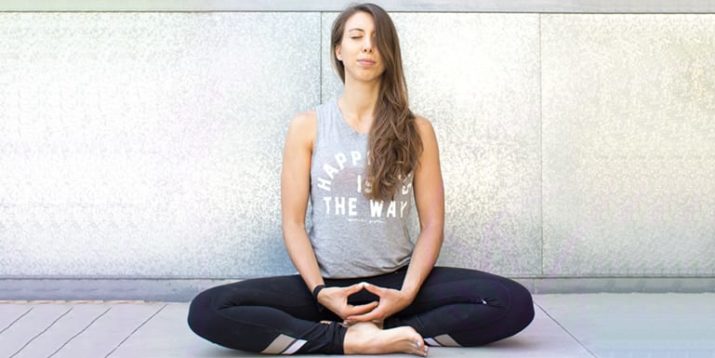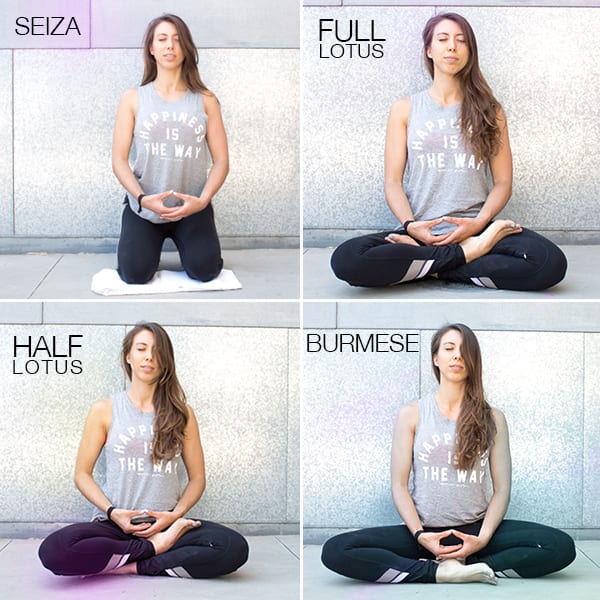What Is Zen Meditation?

When you think of Zen meditation, you might think of monks quietly participating in a mystical practice in a Japanese monastery. While some practice this way, Zen meditation can be used to simply quiet the mind and feel more peaceful rather than as a religious practice. To get a little Zen in your life, you certainly don’t need to quit your job, don an orange robe, and book the next flight to Osaka. Zen meditation, also known as zazen (meaning “seated meditation”), can be done anywhere by anyone.
Zen meditation can help you feel less stressed and more centered. If you think you don’t have the time, consider doing zazen for just 10 minutes a day (if possible, it’s best to meditate at the same time every day to help turn the practice into a habit). With continuous practice, studies show that meditation can actually make changes to the brain to create a more calm default state of mind.
Before You Get Started With Zen Meditation
Create a distraction-free environment before you begin. Shut off your phone and go to a quiet place. If your body is feeling especially tense, you could do some progressive muscle relaxation before sitting. Tension in the body can be a source of tension in the mind, and by calming your body, your mind will be much stiller.
Unlike other meditations, Zen meditation is usually practiced with the eyes slightly open, so place your pillow on the ground in front of a wall that doesn’t have art or a window that won’t lead to distractions during the meditation. While you can sit on a zafu – the traditional round meditation cushion – your ordinary bedroom pillow, folded in half, will work just fine for now. Alternately, you can choose to sit in a chair, as many Zen practitioners do.
How to Find a Good Sitting Position
It’s important to be comfortable during your Zen meditation practice. The seiza (sitting on a small bench), full lotus, half lotus, and Burmese positions are common for zazen practitioners.

Sitting should feel easy and relaxed. You want your body to be at attention, but not in tension. When you first sit — either on a cushion, a bench, or a chair — take a moment to move your torso in a circle and progressively make the circle smaller until you find your center. Place your right hand in your lap, palm faced up, and your left hand palm-up on your right hand. Bring the tips of your thumbs together lightly. This hand position is called the cosmic mudra.
With your mouth closed, gently touch the roof of your mouth with your tongue just behind your teeth. Look straight ahead at the wall in front of you and then drop your gaze to about a 45-degree angle. Without focusing on any particular thing, allow everything in your field of vision to blur. You may close your eyes if that feels more comfortable and periodically open them slightly if you find yourself daydreaming or becoming drowsy.
Now you’re ready to drop in.
Breathing In Zen Meditation
Once you’re seated comfortably, begin to take deep, slow breaths in and out through the nose, keeping the mouth closed. Deep breaths help calm the body and the mind. Don’t force any particular cadence. Just count each inhale and exhale; your first inhale is one, your first exhale is two, and so on.
Your goal is to count to 10 without a thought crossing your mind. Every time you catch yourself thinking about something other than your counting or your breathing, begin again at one. When you first start practicing Zen meditation, you may feel barraged by thoughts. That’s fine. Your mind is probably like that all the time. Now you’re just noticing it. Over time, Zen meditation can help you slow down and observe your thoughts, which calms and refocuses the mind.
What to Do When Thoughts Arise
Many people say, “I’m not a good at meditating. I think too much.” But, it is important to stick with it and not get frustrated or judge yourself if you are not able to count to 10 without a thought coming up. This is not a competition. On the contrary, a primary goal of meditation is to create a less judgmental mind and this includes judgement toward yourself about how “well” you’re doing the practice.
When thoughts do arise, don’t try to force them away. Instead, observe them without judgement and allow them to drift away like clouds in the sky. Don’t get attached to them by going into extended daydreams. If a judgment arises regarding your meditation performance, it is just another thought for you to observe. Simply return your focus to your breath, observe the thought calmly, and start your counting over at one.
Getting Tired?
Many people find they become drowsy when they engage in Zen meditation. If you’re looking for a meditation that is a bit more active, consider kinhin, a walking meditation. Zen practitioners traditionally do kinhin between sitting meditations to give them a boost of energy and to practice the integration of meditative awareness into an everyday activity, such as taking a walk.
To try it, stand up straight and keep your soft gaze at the same 45-degree downward angle. With your left hand, create a fist with your thumb tucked in and place your fist on your solar plexus (just above your belly button) with the back of the hand facing out. Cup your right hand over your left. This is called the Shashu hand position.
Slowly begin to walk in a circle around the room. Keep your attention on your breath, but also on how it feels to walk, in particular on how the soles of your feet feel as they come into contact with the ground. Count your breath as you did with the seated meditation.
After the Practice
Many who are new to meditation start with a 10-minute sit for a few weeks and then gradually build to a longer practice.
Right after completing meditation, it is important not to dive right back into a mind-activating habit — such as picking up your phone to check Facebook or answer emails. Instead, choose a more mundane task and bring your heightened awareness to it. For example, if you choose the task of doing the dishes, stay present and really feel the soap and warm water on your hands. This will help you carry your peaceful mental state from your 10-minute meditation into your daily life.
With enough practice, you may find you’re able to remain more present and peaceful for several hours of the day and be able to deal with difficult circumstances with more ease — yes, even when that person cuts you off in traffic.
If you’re inspired to try this practice for yourself, let us know how it goes in the comments below!

